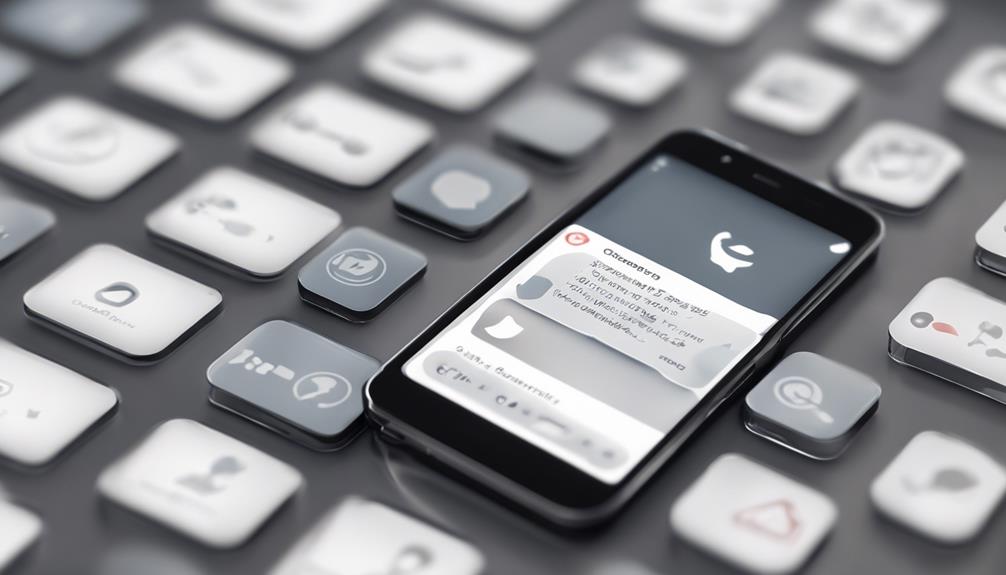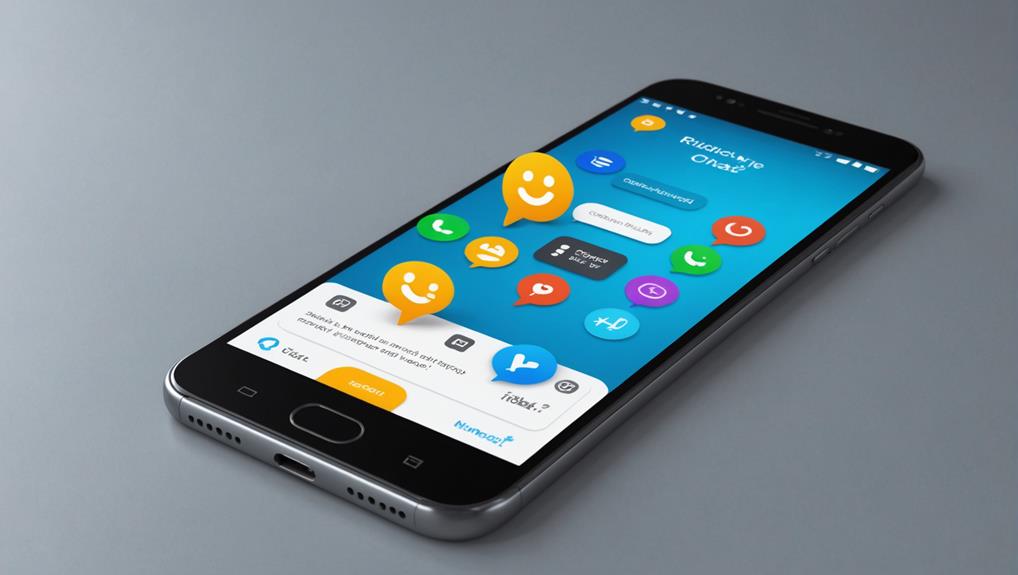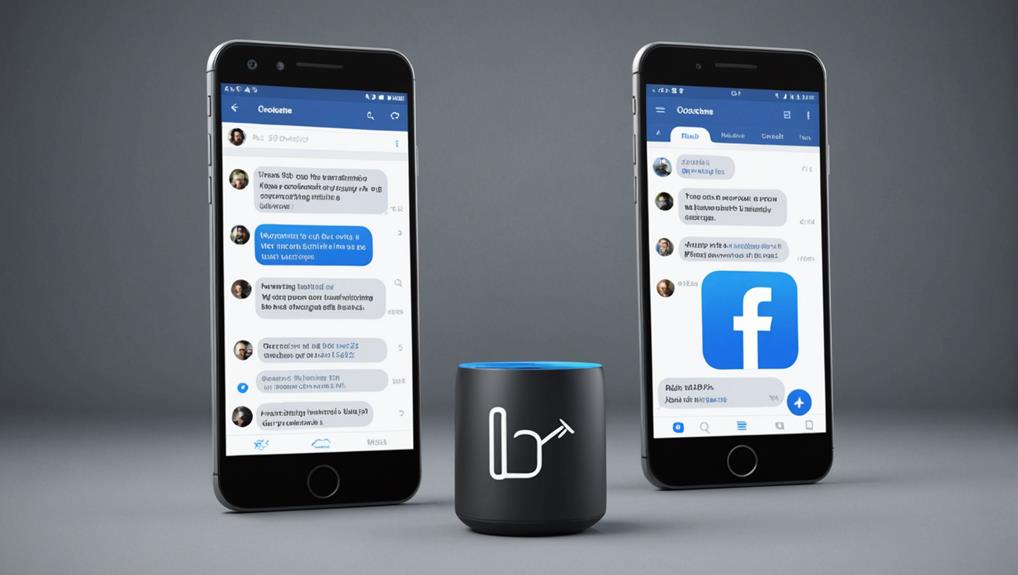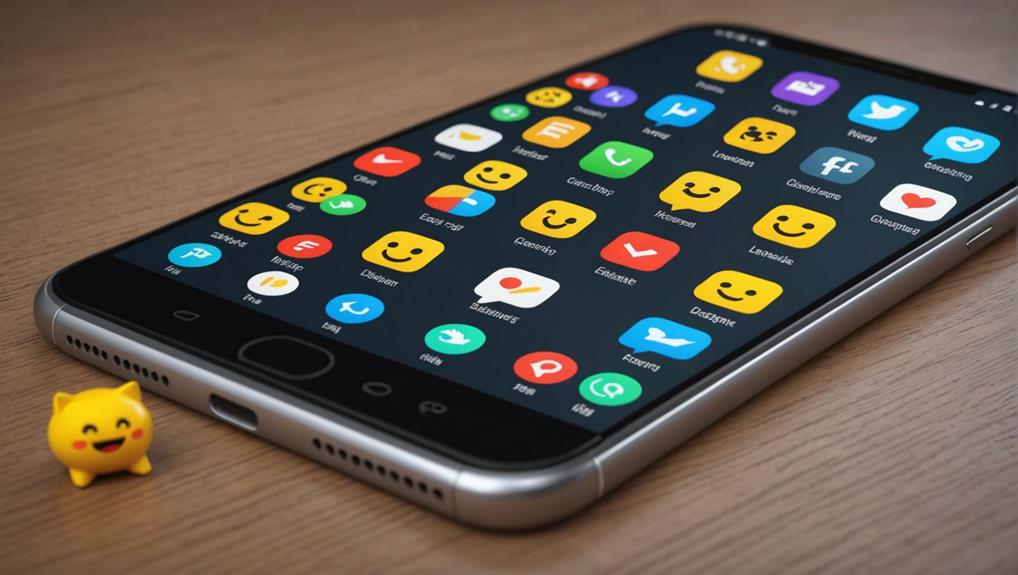
When you see a grey check mark on your messages, it means your message has been sent but hasn't yet been delivered to the recipient. This symbol reassures you that your message is on its way, even though it hasn't reached the other person's device. This can happen for various reasons like the recipient's phone being off or a connectivity issue. Keep in mind, the grey check mark is common across different messaging platforms, although its significance might vary slightly depending on where you're using it. Understanding these subtle differences will improve your communication and keep you better connected.
Understanding Messaging Symbols

In digital communication, symbols like the grey check mark play crucial roles in conveying message statuses clearly and efficiently. You're part of a vast network where every tiny icon has its purpose, helping you connect and stay informed. When you send a message, you're not just pushing out words into a void; you're engaging in a complex exchange facilitated by these symbols.
These icons are your allies. They keep you from feeling left out by ensuring you know exactly what's happening with your messages. Imagine sending a text and being met with silence. Without these symbols, you'd be left wondering, did they get it? Are they ignoring me? But with them, you're in the loop. You're part of the conversation, not just a bystander.
This understanding transcends the practical; it fosters a sense of community. Every time you glance at your phone and see a symbol, you're reminded that you're part of a larger dialogue, not isolated but interconnected. These little symbols, like the grey check mark, are more than just functional. They reassure you that you belong, that you're part of this digital ecosystem.
The Basics of Grey Check Marks
Understanding the grey check mark on your messages shows that your message has been successfully sent but not yet delivered. This simple icon is a quiet helper in your daily communications, letting you know where your message stands in its journey to your friend or family member's inbox.
You're not alone if you've ever felt a pang of worry when a message doesn't seem to get through. That grey check mark is there to assure you that you've done your part; your message is on its way and it's just waiting to be received. It's a common experience, shared by millions every day, each of us checking our phones, hoping to turn that solitary grey tick into something more.
Significance Across Different Platforms

Different platforms interpret the grey check mark in various ways, affecting how you perceive the status of your messages. On social media sites like Facebook and Instagram, a grey check mark next to your sent message typically means it's been delivered to the server but not yet seen by the recipient. You're in the loop, but still waiting on that connection to deepen when they see your message and respond.
In professional settings, such as emails or business messaging apps like Slack, a grey check mark often indicates that your message has successfully left your outbox but hasn't been acknowledged by the recipient yet. It's like you've knocked on the door, but they haven't opened it. This can be crucial for you because it sets the stage for follow-ups or further actions.
Understanding these subtle differences helps you navigate your social and professional circles more effectively. You're not left guessing; you know exactly where your message stands in the communication chain. This knowledge not only saves you from worry but also makes you a more competent and confident communicator, ensuring you're always a part of the group, staying connected no matter the platform.
Grey Check Mark in WhatsApp
You'll notice that a grey check mark appears next to your message in WhatsApp when it has been sent but not yet delivered to the recipient's device. This little symbol is more than just a notification; it's a part of the communication bridge you're building. Everyone wants to feel connected, and understanding these subtle cues helps you gauge where your message stands in the digital conversation.
When you send a message, that single grey check mark is your first step in reaching out. It means your words have left your phone and are on their way to your friend or family member. This can be particularly reassuring when you're trying to coordinate plans, share good news, or ask for support.
However, if the check mark doesn't turn into two grey checks (which means the message has been delivered) or eventually into blue checks (indicating the message has been read), you might start to feel a bit anxious. Remember, this could be due to a variety of reasons like the recipient's phone being off or out of service area. It's not necessarily a reflection on your relationship or their eagerness to respond.
Interpretation in Facebook Messenger

In Facebook Messenger, a grey check mark indicates that your message has been sent but not yet delivered. It's a simple sign that your words are on their way, even if they haven't quite reached their destination yet. This small, grey symbol holds the promise that you're still connected, even when the immediate response isn't there.
When you see this grey check, it's a moment suspended in time where you're part of a larger network of friends, family, and colleagues. You've reached out, and now, you're in the collective space of waiting—a shared experience we all know well in our digital conversations. This isn't just about technology; it's about the anticipation and the hope of staying linked with those who matter to you.
Meaning in Other Messaging Apps
While the grey check mark in Facebook Messenger indicates a sent message, other apps might assign different meanings to this symbol. You'll find that in apps like WhatsApp, a single grey check means your message has been sent, but it hasn't yet been delivered to the recipient's device. It's a subtle distinction, but it helps you understand where your message stands in the communication process.
On Viber, a grey check mark shows that your message has indeed been sent from your phone, but, just like in WhatsApp, it doesn't confirm delivery. This can be particularly reassuring, letting you know you're connected, even if the person hasn't received the message yet. You're part of a network, always in the loop, never truly out of touch.
Telegram, however, doesn't use grey check marks. Instead, they employ a single green check to indicate that a message has been sent. It's a small difference in color, but it's part of what makes each app's community unique. You get to feel at home with the symbols that become part of your daily communication rituals, understanding each other's spaces and respecting the varied languages of digital connection.
Common Misconceptions Explained

Many people mistakenly believe that a grey check mark always means their message has been read, when in fact it typically signifies only that the message has been sent. This misunderstanding can lead to feelings of confusion or rejection, especially if you're waiting for a reply and it seems like it's being ignored.
It's important to realize you're not alone in this. Almost everyone at some point gets a bit anxious over message statuses. But here's the deal: that grey check mark is just the first step in the communication process. It doesn't reflect the recipient's response time or their intent; it simply means your message has successfully left your phone or computer.
Responding to Grey Check Marks
Understanding that a grey check mark simply means your message has been sent, let's explore how you should respond when you see one. It's easy to feel a bit anxious when you don't receive an immediate reply, but remember that everyone's pace in responding can vary greatly. You're not alone in feeling this way; it's a common experience when we communicate through messages.
Give your friend or colleague some time. They might be busy, in a meeting, or simply taking a moment for themselves. Patience is not just a virtue here; it's a way to show respect for their time and space. You're part of a community that values understanding and empathy, so embody those qualities.
If the conversation is urgent or time-sensitive, it's okay to follow up if you haven't heard back after a reasonable amount of time. A gentle nudge can be effective. Just ensure your follow-up message is polite and considerate, keeping the tone friendly and supportive. This approach helps maintain a positive connection and demonstrates your awareness of the collaborative nature of communication. You're fostering a considerate messaging environment where everyone feels respected and valued.
Enhancing Communication in Messaging

To enhance communication in messaging, it's crucial to employ clear language and timely responses. You want to feel connected, understood, and part of the group, right? Clear language helps everyone get on the same page quickly, avoiding misunderstandings that can make you feel left out or frustrated. Being prompt in your replies not only keeps the conversation flowing but also shows that you value the connection and the person on the other end.
When you're crafting your messages, think about how they contribute to a sense of belonging. Use words that build up, not tear down. You're in this together, whether it's planning a weekend outing, discussing a book, or just sharing daily experiences. Your choice of words can invite further conversation or close it down.
Also, remember to read messages thoroughly before responding. This shows that you genuinely care about the discussion, which strengthens your bonds with others. And don't be afraid to ask clarifying questions if something isn't clear. It's better to understand fully than to assume and miscommunicate.
Conclusion
So, now you know what that grey check mark means in your messages. It's a subtle nudge that your message has been sent but not yet seen. Whether it's WhatsApp, Facebook Messenger, or another app, understanding this can ease your mind. Don't jump to conclusions if someone hasn't replied immediately. Use this knowledge to enhance your communication, keeping the flow smooth and stress-free. Remember, it's just a part of the digital conversation game.






